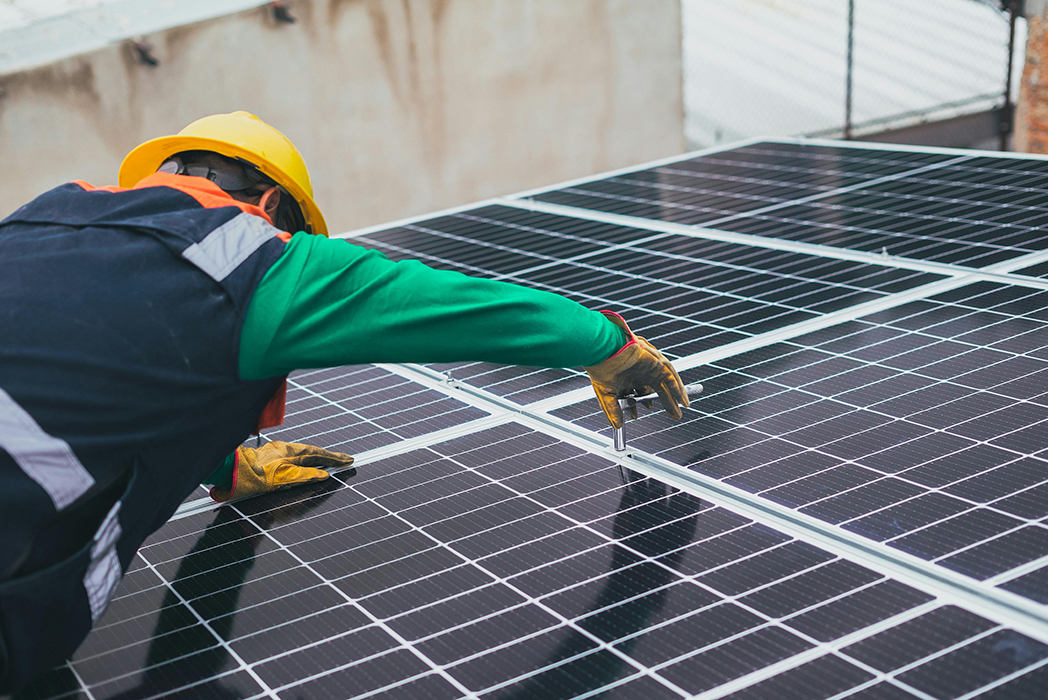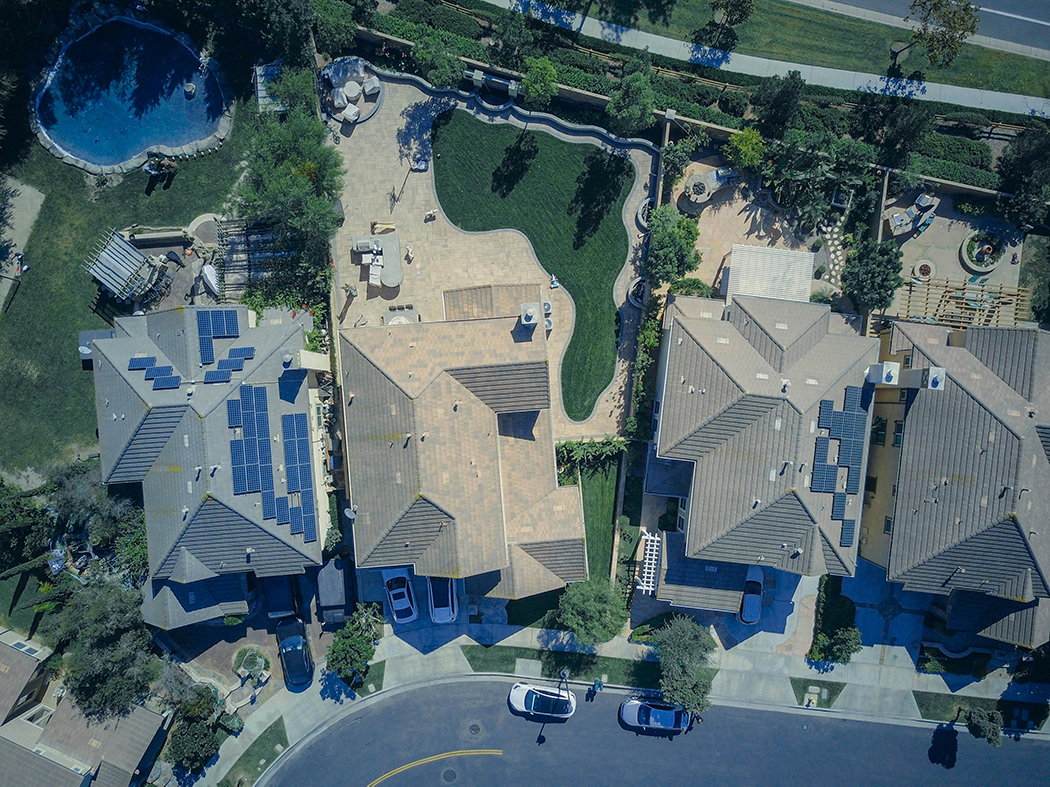California has long been a leader in promoting sustainability and energy efficiency, especially for commercial buildings. With rising energy costs and increasing pressure to reduce carbon footprints, businesses across the state are looking for ways to upgrade their facilities without breaking the bank. Fortunately, California offers a wide range of financial incentives and rebates designed to make energy efficiency projects more affordable than ever. From cash rebates to zero-interest loans, these programs can transform an expensive upgrade into a smart investment with a fast return.
At EcoGreenVision, we specialize in helping businesses navigate this complex landscape of incentives, ensuring they maximize savings while making their facilities greener and more efficient. In this comprehensive guide, we’ll explore the key energy incentives and rebates available in California in 2025, how they benefit commercial properties, and how EcoGreenVision can streamline the process for you.
Why Energy Efficiency Matters for California Businesses
Before diving into the specifics of incentives, let’s take a step back and look at why energy efficiency is such a hot topic for commercial buildings in California. The state’s ambitious climate goals—like achieving carbon neutrality by 2045—mean that businesses are under increasing pressure to reduce energy consumption and adopt sustainable practices. At the same time, energy costs in California are among the highest in the nation, with commercial electricity rates often exceeding 20 cents per kilowatt-hour.
For building owners and facility managers, this creates a dual challenge: how to meet sustainability targets while keeping operational costs in check. Upgrading central plant equipment, installing energy management systems, and adopting smart controls are proven solutions—but they come with upfront costs. That’s where California’s incentives and rebates come in, offering financial support to offset expenses and accelerate the payback period.
EcoGreenVision has seen firsthand how these programs can transform a business’s bottom line. Whether you manage a small office building or a sprawling industrial complex, the opportunities to save are substantial—and we’re here to help you seize them.
Key Incentives & Rebates Available in California

California’s energy efficiency incentives are a mix of utility-driven programs, state-funded initiatives, and innovative financing options. Below, we break down the most impactful opportunities for commercial buildings in 2025.
1. Utility Rebates from SCE, PG&E, and SDG&E
California’s major utilities—Southern California Edison (SCE), Pacific Gas & Electric (PG&E), and San Diego Gas & Electric (SDG&E)—offer some of the most generous cash rebates in the country. These programs are designed to encourage businesses to upgrade energy-hungry systems and adopt cutting-edge technologies. Here’s what you can expect:
- Central Plant Upgrades: Replacing outdated HVAC systems, chillers, or boilers with high-efficiency models can earn you thousands of dollars in rebates. For example, SCE offers up to $150 per ton for qualifying chiller upgrades.
- Energy Management Systems (EMS): Installing an EMS to monitor and optimize energy use can qualify for rebates of $0.08 to $0.15 per kWh saved, depending on the utility.
- Lighting Retrofits: Switching to LED lighting with smart controls often comes with rebates of $0.05 to $0.20 per kWh reduced.
These rebates vary by utility and project scope, but they can cover 20-50% of the upfront costs in many cases. At EcoGreenVision, we’ve helped clients secure tens of thousands of dollars in rebates by identifying eligible upgrades and handling the application process from start to finish.
2. On-Bill Financing & Low-Interest Loans
For businesses hesitant to pay upfront costs, California utilities offer financing options that make energy efficiency projects cash-flow positive from day one. Two standout programs include:
- On-Bill Financing (OBF): Available through SCE, PG&E, and SDG&E, OBF provides zero-interest loans repaid through your utility bill. The loan is structured so that energy savings offset the monthly payments, meaning no out-of-pocket expense. Loan amounts can reach $250,000 or more for large projects.
- Low-Interest Loans: Beyond OBF, some utilities partner with third-party lenders to offer low-interest loans (often 1-3%) for energy upgrades. These are ideal for businesses looking to bundle multiple improvements—like HVAC, lighting, and insulation—into one project.
EcoGreenVision’s team excels at matching clients with the right financing option, ensuring you can upgrade now and pay later without straining your budget.
3. California Energy Commission (CEC) Programs
The California Energy Commission (CEC) takes energy efficiency to the next level with grants and incentives for large-scale projects. These programs are especially valuable for industrial facilities, warehouses, and multi-tenant commercial buildings aiming for deep energy retrofits. Key offerings include:
- Energy Efficiency Financing Program: Provides grants and low-cost loans for projects that achieve significant energy savings or incorporate renewable energy.
- Building Initiative for Low-Emissions Development (BUILD): Offers funding for near-zero-emission building technologies, such as advanced heat pumps or solar-plus-storage systems.
While CEC programs often require detailed applications and compliance with strict guidelines, the rewards can be substantial—sometimes covering 30-50% of project costs. EcoGreenVision’s expertise in navigating these requirements ensures your application stands out and gets approved.
4. Demand Response Incentives
Demand Response (DR) programs reward businesses for reducing energy use during peak demand periods, like hot summer afternoons when the grid is under stress. By installing smart energy controls—like programmable thermostats or automated load-shedding systems—you can:
- Earn rebates of $50-$200 per kW of reduced demand.
- Qualify for lower electricity rates year-round.
- Contribute to grid stability and avoid costly outages.
For example, a mid-sized office building that cuts 100 kW of peak demand could pocket $5,000-$20,000 in incentives annually. EcoGreenVision integrates DR strategies into our energy optimization plans, helping you save money while supporting California’s clean energy goals.
The Business Case: How Incentives Pay Off
Now that we’ve covered the “what,” let’s talk about the “why.” How do these incentives translate into real benefits for your business? Here are three key ways:
- Cost Savings: Between rebates, financing, and reduced energy bills, many projects achieve a return on investment (ROI) within 2-5 years. For instance, a $100,000 HVAC upgrade with $30,000 in rebates and $20,000 in annual savings pays for itself in just over two years.
- Sustainability Goals: Incentives make it easier to meet corporate ESG (Environmental, Social, and Governance) targets or comply with California’s stringent building codes, like Title 24.
- Competitive Edge: Energy-efficient buildings attract tenants, boost property value, and enhance your reputation as a forward-thinking business.
Take one of our recent clients as an example: a 50,000-square-foot warehouse in Los Angeles. By upgrading their lighting and HVAC systems, they secured $45,000 in SCE rebates, financed the rest through OBF, and cut their energy bills by 25%—saving $60,000 annually. With EcoGreenVision’s help, the project was seamless, and the savings continue to grow.
Why Choose EcoGreenVision?

With so many incentives available, you might wonder: why not handle this yourself? The truth is, tapping into these programs can be a logistical nightmare without the right expertise. Utility applications require detailed documentation, energy audits need precision, and compliance paperwork can be overwhelming. That’s where EcoGreenVision shines.
Here’s how we add value:
- Comprehensive Energy Audits: We identify the upgrades that qualify for the biggest rebates and deliver the most savings.
- Rebate Management: From application to approval, we handle every step, ensuring you don’t miss out on a single dollar.
- Custom Solutions: Whether it’s a chiller retrofit or a full EMS installation, we tailor projects to your facility’s unique needs.
- Ongoing Support: We monitor your energy performance post-upgrade to maximize long-term efficiency.
Our track record speaks for itself. In 2024 alone, we helped clients across Southern California secure over $500,000 in rebates and reduce their energy use by an average of 22%. When you partner with EcoGreenVision, you’re not just upgrading your building—you’re investing in a smarter, greener future. Ready to start saving? Call us today at (714) 905-9590 for a free consultation.
Your Top Questions About California Energy Incentives Answered
-
What types of businesses can benefit from California’s energy incentives?
Virtually any commercial property in California can benefit, including offices, warehouses, retail stores, industrial facilities, and multi-tenant buildings. Whether you’re upgrading HVAC systems, installing energy management tools, or reducing peak-hour usage, programs like utility rebates, CEC grants, and Demand Response incentives are available. EcoGreenVision helps businesses of all sizes identify the best opportunities and maximize their savings.
-
How much money can I save with these energy rebates and incentives?
Savings depend on the project scope and incentives you qualify for. For example, a $100,000 HVAC upgrade might secure $30,000 in utility rebates and save $20,000 annually on energy bills, paying for itself in just over two years. Larger projects with CEC funding could offset 30-50% of costs. EcoGreenVision conducts free audits to estimate your exact savings and ensure you claim every available dollar.
-
Is it complicated to apply for California energy incentives?
The process can be complex, involving detailed applications, energy audits, and compliance paperwork—especially for programs like CEC grants or utility rebates. However, EcoGreenVision simplifies it all. We handle the applications, coordinate with utilities, and manage every step, so you can focus on running your business while we secure your incentives.
-
How long does it take to see a return on investment (ROI) from energy upgrades?
With California’s incentives, ROI typically ranges from 2 to 5 years, depending on the upgrade and financing options. For instance, combining rebates with On-Bill Financing can make projects cash-flow positive from day one. EcoGreenVision tailors solutions to speed up your payback period, ensuring you see financial and sustainability benefits as soon as possible.
How to Get Started in 2025
The good news? There’s never been a better time to take advantage of California’s energy incentives. With programs evolving and funding levels fluctuating, acting now ensures you lock in the best opportunities before they change. Here’s a simple roadmap to get started:
- Schedule a Consultation: Contact EcoGreenVision for a free assessment of your facility’s energy needs and incentive eligibility.
- Conduct an Energy Audit: Our team will analyze your systems and pinpoint the upgrades with the highest ROI.
- Apply for Incentives: We’ll handle the paperwork and coordinate with utilities or the CEC on your behalf.
- Implement Upgrades: Our certified technicians execute the project with minimal disruption to your operations.
- Enjoy the Savings: Watch your energy bills drop and your rebates roll in.
Conclusion: Turn Incentives into Action
California’s energy incentives and rebates are more than just financial perks—they’re a gateway to a more efficient, sustainable, and profitable future for your business. Whether it’s cash from SCE, a zero-interest loan from PG&E, or a CEC grant for a groundbreaking retrofit, these programs make it possible to upgrade without the financial strain. And with EcoGreenVision by your side, the process is as easy as it is rewarding.
Ready to unlock the full potential of your commercial building? Contact EcoGreenVision today for a free consultation and take the first step toward smarter energy use in 2025. Let’s make your facility a model of efficiency—and your budget a little greener.

